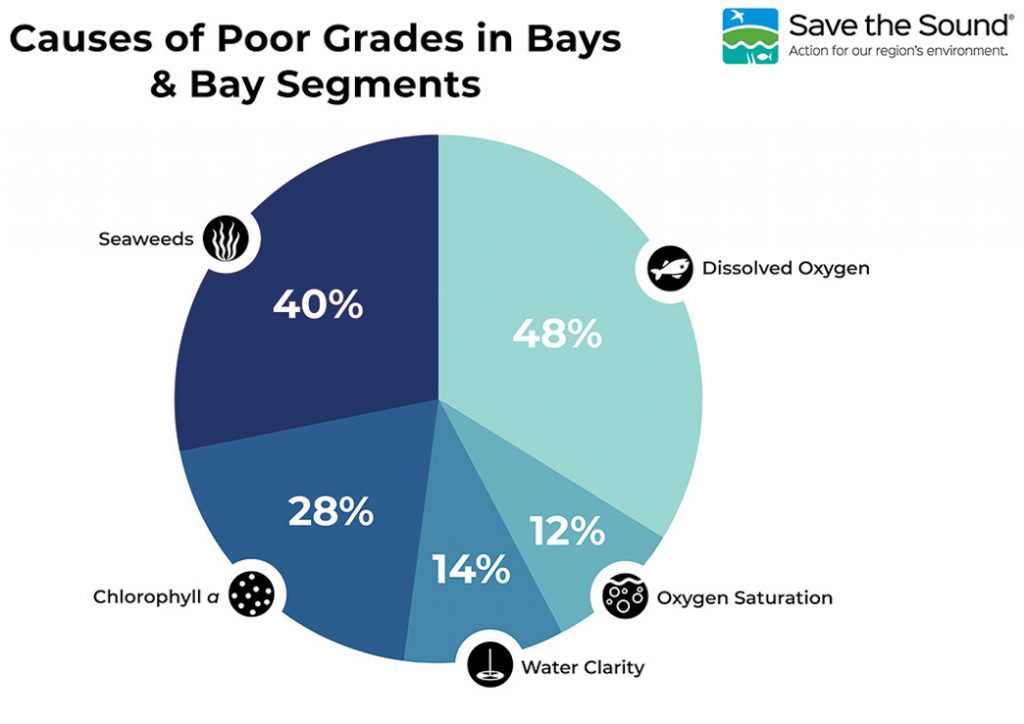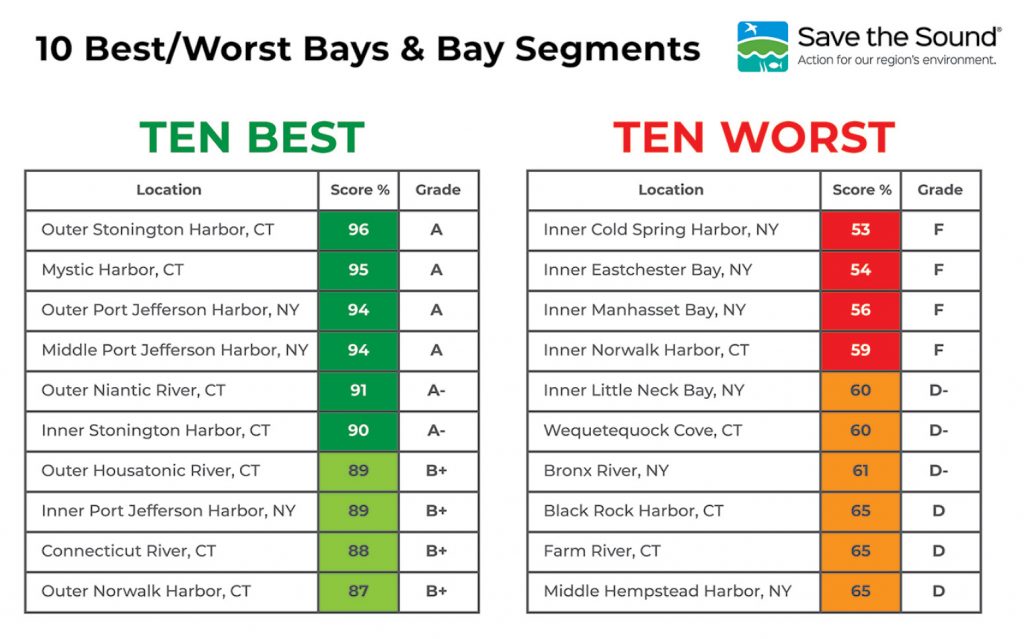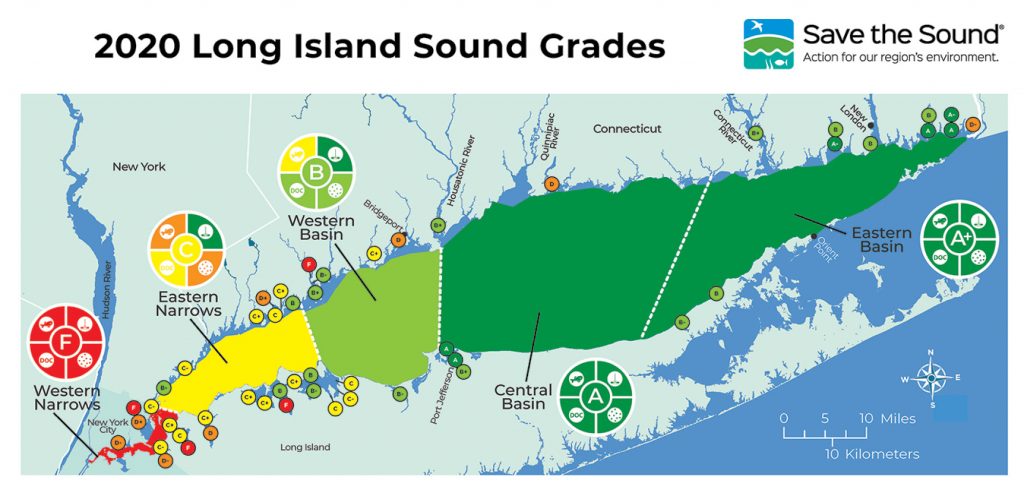For the First Time, Grades for LI Sound’s Bays and Harbors
By Martin Hain, Save the Sound communications specialist
We often think of Long Island Sound as one body of water, with common ecological features, cultural experiences, and environmental challenges. That’s true, to a point—however, because it is such a large body of water with lots of nooks and crannies, the many different parts of the Sound often experience very different water quality conditions. That’s why Save the Sound’s biennial Long Island Sound Report Card divides the Sound into five sections—the Western and Eastern Narrows near New York City, and the Western, Central, and Eastern Basins as you move towards the Atlantic Ocean—and grades each separately.
For the first time, the 2020 Report Card, released in October and funded by the John and Daria Barry Foundation, expands on that precision by including individual grades for bays and harbors all around the Sound. Like the Sound itself, each bay has differing and unique conditions. We have subdivided some of the larger bays, yielding a total of 50 bay segments.


These segments are each tested as part of the Unified Water Study (UWS), which you read about in this column in October. In the UWS, funded by the EPA’s Long Island Sound Study and administered by Save the Sound, twenty-two partner organizations and municipalities use identical testing methods to track levels of dissolved oxygen, chlorophyll a, water clarity, seaweeds, and dissolved oxygen saturation, yielding scores that allow us to compare local conditions and identify areas that need protection or restoration action.
The findings are striking, and in many cases concerning. Only 44% of the bays and bay segments received a grade of B or above. Nearly half the bay segments got a D or below in dissolved oxygen, which marine wildlife needs to survive. Another concerning finding is poor grades resulting from excess seaweed and algae, which are caused by nitrogen pollution entering the Sound from coastal and upstream communities. Further, the report revealed that the quality of nearby open water in the Sound does not always predict the quality of water in adjacent bays, with important ramifications for environmental health.
Professor Jamie Vaudrey of the University of Connecticut, a science advisor on the Report Card, commented, “Nitrogen pollution remains a major threat to a healthy Sound. Our stressed bays, which experience marine life die-offs and algae blooms, are telling us that it’s more critical than ever before that communities continue to reduce nitrogen input and other nutrient pollution.”
There is somewhat better news for the Sound’s open waters. Twelve years of open-water trends have shown gradual improvement from upgrading wastewater treatment plants to reduce the nitrogen load being dumped into the Sound. The lower coastal population and strong tidal exchange of the Eastern and Central Basins continue to receive A grades, with an environment supportive of marine life. The Eastern Narrows and Western Basin scored a C and a B respectively, with worsening chlorophyll a scores over the past two years likely a result of fluctuating weather conditions. The Western Narrows remain mired in an F, underlining the fact that more work needs to be done, though improving levels of dissolved organic carbon offer a hopeful sign for the future for this section of the Sound. Overall, these scores bear close watching, particularly as climate change and development pressures are expected to continue to add stress to marine environments.
Jason Krumholz, PhD., another science advisor, added, “We see improvements in our long term monitoring of the open waters of Long Island Sound that tell us we have the tools to improve water quality with decisive management action. The good news is we’re pretty confident these strategies will also apply in the struggling bays of the Sound, but it only works if we base our decisions on good data; identifying trouble spots or success stories. For this reason, continued support for regional water quality monitoring efforts is absolutely vital.”

Good data is essential to identifying problem areas in need of long-lasting environmental protection. That’s why we make the Report Card, all the UWS data, beach water quality histories, sea level rise projections, and more available at SoundHealthExplorer.org. In making this significant data available and easily understandable to concerned citizens and elected officials all around Long Island Sound, we hope to empower communities to take action for clean water for all to enjoy. ■




